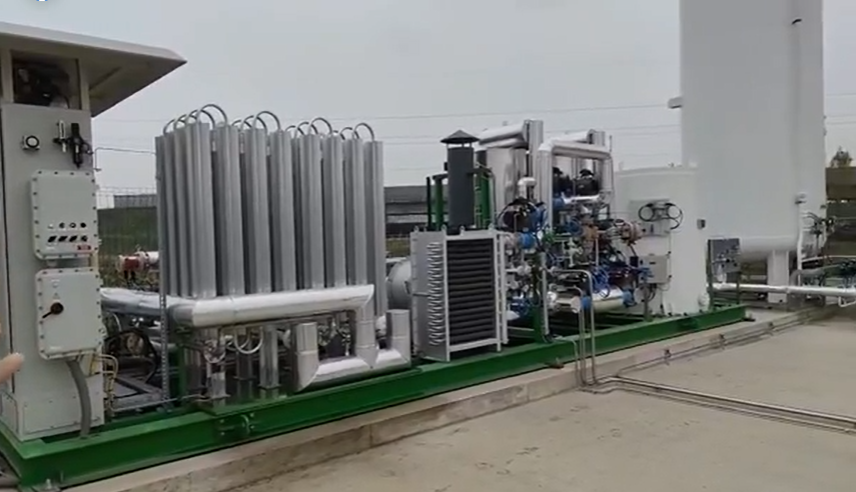Last Updated on 10/11/2020 by Piero Mattirolo

Much has been said about biomethane injected into the natural gas network, also in the webinars organized by Agroenergia. Certainly important players in the waste sector have traced the path for the development of this sector, not only in the center-north but also in the south, albeit so far to a limited extent compared to the need for use in automotive, but with good prospects in the short term and even more interesting if the reference decree of 2018 to encourage the conversion of agro-zootechnical plants.
The combination of biomethane produced by the fermentation of the organic fraction fits optimally into the circularity of the economy if this product is self-consumed by a fleet of methane vehicles used for separate collection or service or feeds a fleet of city buses: all means using CNG - gas compressed to more than 200 bar.
But the prospects for maintaining the gas market price of a year ago were unfortunately dramatically denied by the collapse in consumption following the epidemic. A real recovery will be difficult in the short term, however we are confident that, unless a further disastrous total lock-down, this price will go back to more "normal" levels but will never be able to remunerate investors according to the business plans developed at the time. Certainly the component linked to obtaining the CIC is even more important today than the withdrawal of biomethane by the GSE.
While this fact may not pose a particular problem for large market players, for which the investment in biomethane is a minor part of the overall income statement and which still achieve other objectives from the production of biomethane, the discussion moves to the more strictly economic level if we consider the developments in the agro-zootechnical field.
The entrepreneurs of the latter sector, who had in any case decided to partially convert or upgrade their biodigestion plant to biomethane, they certainly found themselves faced with a crisis of the gaseous product but with a tumultuous development of the liquid product, three-digit compared to a few years ago, related to heavy transport. The price differential with respect to CNG is very interesting and the GSE returns in the form of an increase in the CICs a large part of the plant investment necessary to liquefy.
In fact, the L-CNG stations from a few units have reached more than 80, almost all in the North with three virtuous exceptions in Puglia, Campania and Sicily.
The type of L-CNG station allows liquid methane to be received by tanker, store it in a cryogenic tank from which it is then taken in liquid form to refuel trucks with cryogenic tanks equipped for heavy transport or in gaseous form (CNG) tablet for cars and light vehicles.
Many major logistics organizations are converting their lorry fleets to liquid gas, which guarantees the same autonomy as diesel and higher remuneration: are more than 2500 new or reconverted heavy vehicles to this fuel.
So far the tankers that refuel liquid methane are forced to go to Marseille and / or Barcelona to load it from the existing terminals, or from Rotterdam by rail ISOTANK.
In fact in Italy this operation is not possible and this situation will remain until the end of 2021 in which the Pir group LNG terminal / depot in Ravenna is expected to come into operation (Ottolenghi family) and Edison.
But the effervescence of liquid methane and therefore of the potential biomethane in liquid form has shifted to the front of "technology providers" , "High-tech" and innovative: some Italian companies are installing the first micro or nanoliquefactors in their own fields on farms. We should speak more correctly of nanoliquefaction since the production sizes of our interest are mostly below 10 tons per day.
Between Turin, Veneto and Lombardy (the provinces of Bergamo, Brescia, Lodi and Pavia) in fact we are witnessing a flourishing of initiatives by "pioneering and enlightened" agricultural entrepreneurs in progress and in the project phase.
Among the numerous topics with consequent obligations that must be addressed to plan the investment of "Biomethane done right" we would like to ultimately point out the following:
– definition of the agro-zootechnical diet of the biodigester (if agricultural) also as a function of the possibility of using second-harvest corn and the percentage of conversion from traditional electricity production to maximize the return on investment under the incentive scheme;
– definition of the characteristics of the biodigester (if from waste) and the organization of the supply / purchase of feed substrates and the use of digestate to maximize the return on investment under the incentive scheme;
– biomethane certification in terms of environmental sustainability (calculation of the reduction of CO2 emissions. compared to fossil fuel) as required by the current decree and the European directives for bioliquids and biofuels with particular reference to the RED I directive and next year to RED II, as regards the calculation methodology;
– evaluation of the micro / nanoliquefaction option and the optimal configuration (injection into the network and subsequent "virtual" liquefaction from the network or liquefaction of the gaseous biomethane) ;
and in particular therefore for liquid biomethane
– choice of the technology and supplier of the micro / nanoliquefaction plant most suitable for the investment to make (separate solution downstream of the biogas upgrading or optional option of the integrated upgrading + liquefaction solution);
– definition of the supply chain, in particular the "downstream" part with respect to the plant that includes commercial agreements with traders and / or hauliers and / or with the managers of customer service stations; – preparation of the authorization documentation for the fire brigade complete with all the requests from the point of view of safety that inevitably complicate the plant construction

